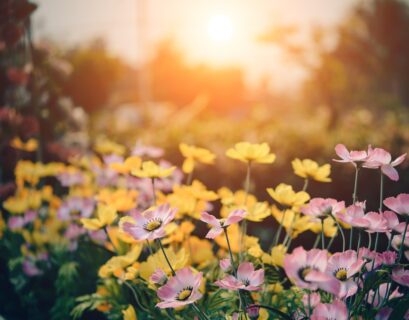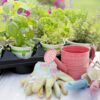In a world increasingly focused on sustainability, gardening offers a wonderful opportunity to contribute positively to the environment. Sustainable gardening involves practices that minimize the use of non-renewable resources, reduce waste, and support biodiversity. Whether you’re starting from scratch or looking to make your existing garden more eco-friendly, here are essential steps and tips to help you build and maintain a sustainable garden.
1. Start with Soil Health
Healthy soil is the foundation of a sustainable garden:
- Compost: Create your own compost bin to recycle kitchen scraps, yard waste, and plant trimmings into nutrient-rich compost. Compost improves soil structure, fertility, and water retention.
- Mulching: Use organic mulches like straw, leaves, or grass clippings to suppress weeds, retain moisture, and gradually improve soil fertility as they decompose.
2. Choose Native and Adapted Plants
Selecting plants suited to your local climate and soil conditions reduces water and maintenance needs:
- Native Plants: Choose native species that are adapted to your region’s climate and soil. They require less water, fertilizer, and pesticide inputs.
- Drought-Tolerant Plants: Opt for drought-tolerant varieties that can withstand dry conditions once established, reducing the need for irrigation.
3. Water Wisely
Conserving water is crucial for sustainable gardening:
- Efficient Irrigation: Use drip irrigation or soaker hoses to deliver water directly to plant roots, minimizing evaporation.
- Rainwater Harvesting: Install rain barrels or cisterns to collect rainwater from roofs for irrigation during dry periods.
- Mulching: Apply mulch around plants to retain soil moisture and reduce water evaporation.
4. Integrated Pest Management (IPM)
Promote natural pest control methods to minimize the use of synthetic pesticides:
- Companion Planting: Plant pest-repellent plants alongside susceptible ones to deter pests naturally.
- Beneficial Insects: Attract beneficial insects like ladybugs and lacewings that prey on garden pests by planting flowers such as dill, fennel, or marigolds.
- Organic Sprays: Use homemade solutions like garlic spray or neem oil to manage pests without harming beneficial insects or pollinators.
5. Reduce, Reuse, Recycle
Practice sustainable gardening by minimizing waste and reusing materials:
- Recycled Materials: Use recycled materials for garden beds, pathways, and containers whenever possible.
- Upcycling: Repurpose old containers, pallets, or furniture into creative garden features.
- Composting: Turn kitchen scraps and garden waste into compost instead of sending them to landfills.
6. Support Biodiversity
Create a diverse ecosystem to attract beneficial insects, birds, and wildlife:
Wildlife Habitats: Incorporate bird feeders, bat houses, or insect hotels to support biodiversity in your garden.
Native Plants: Plant a variety of native flowers, shrubs, and trees to provide food and shelter for local wildlife.
Pollinator Gardens: Include plants that attract pollinators like bees, butterflies, and hummingbirds, such as lavender, coneflowers, and bee balm.








